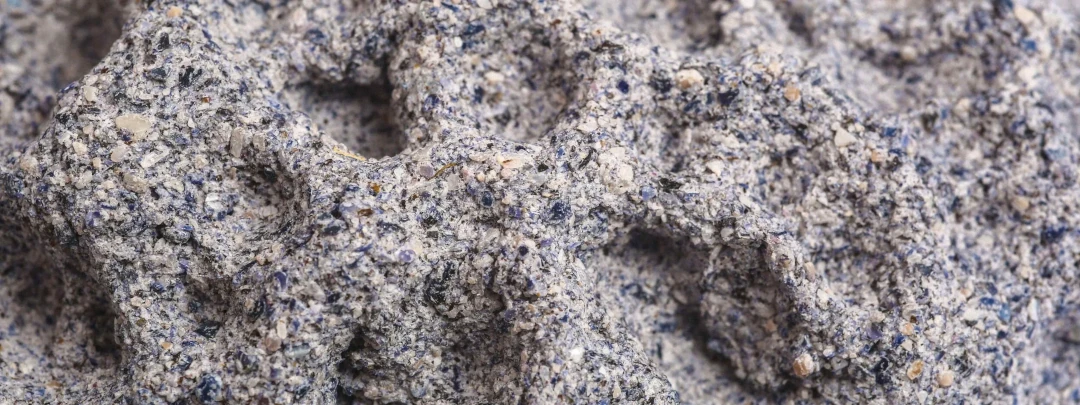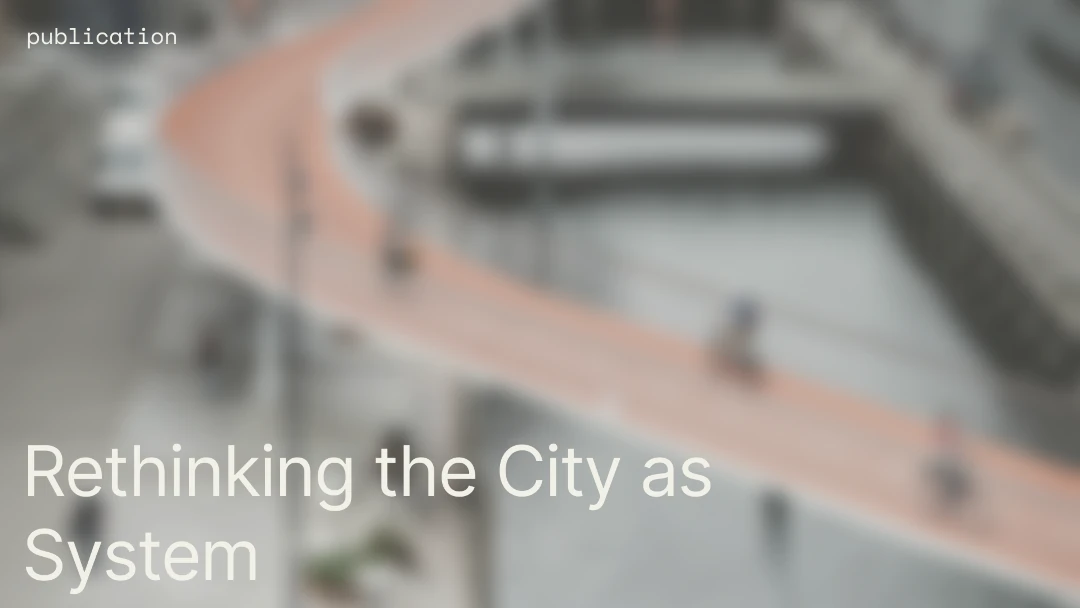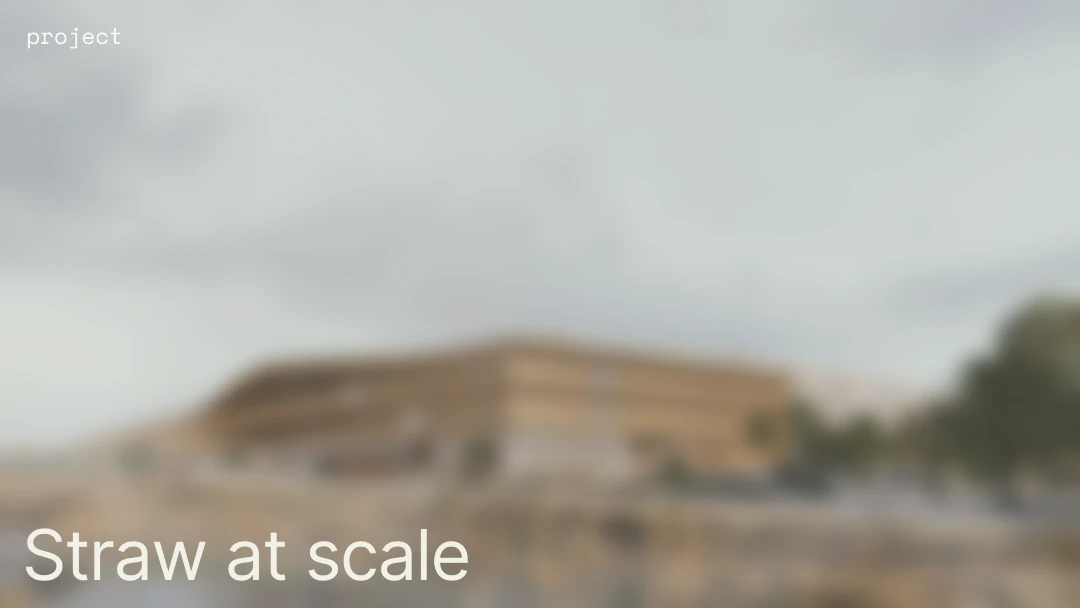
Thesearch for alternative materials in architecture and construction has led to renewed interest in marine-derived by-products. Mussel shells, once considered a waste problem, are now recognised for their technical properties and potential to reduce reliance on resource-intensive materials. Their use also connects with a wider movement towards bio-inspired innovation, where natural structures guide the design of stronger, more efficient composites.
The seafood industry produces millions of tonnes of shell waste every year. Galicia, Spain, alone generates over 25 000 tonnes annually from mussel processing. Most of this is sent to landfill or dumped at sea.
Mussel shells are over 95 % calcium carbonate, with thermal insulation capability, a porous structure, and distinctive shapes.These qualities make them a versatile feedstock for building materials.
Calcáreo by Carolina Pacheco
Calcáreo is an open-source project from designer Carolina Pacheco. It uses finely ground mussel shells combined with alginate, a natural binder from brown algae, to create a mouldable biocomposite. The material resembles ceramic, can be shaped into temporary objects, and dissolves in water at the end of its life, returning its component sto the environment.
Insulation and Loose Fill
The Biovalvo Modulus in Galicia used loose-fill mussel shells in roof, wall,and foundation systems. It achieved thermal conductivity similar to expanded clay or light wood while diverting around 50 tonnes of waste from landfill.
Mortars and Gypsum Plasters
Laboratory tests replacing traditional sand aggregates with mussel-shell particles have produced lighter mortars with improved thermal performance, though with reduced compressive strength. These materials remain suitable for interior partitions and finishing plasters.
Concrete Aggregates and Drainage
Research at Universidade da Coruña shows that partial replacement of concrete aggregates with crushed shells can improve capillary action, acoustic performance, and insulation. The Biovalvo Project also explores their use in foundations, overlays, and drainage layers.
Innovative Infrastructure and 3D Printing
Italian start-up W3DS converts mussel shells into calcium carbonate powder for eco-friendly mortars and bricks. The company is testing applications in 3D-printed buildings and public infrastructure such as cycle paths.
Water-Management Design
The Institute for Advanced Architecture of Catalonia has proposed mussel-shell-based tiles and bricks for coastal public spaces, where they can help manage water flows and support urban resilience.
Bioceramic Cladding and Aesthetic Finishes
INFAUNA is a project that combines mussel shells with alginate to create decorative cladding and modular ceramic components designed for reuse or return to the environment.

The concept of learning from shells is also shaping new developments in cement technology. Researchers Reza Moini, Shashank Gupta, and Hadi S. Esmaeeli at Princeton University have developed a cement composite inspired by nacre,or mother-of-pearl. Nacre’s structure consists of rigid mineral layers separated by thin, flexible interfaces, which make it exceptionally tough.
The team recreated this architecture in cement by forming hexagonal plates of cement paste separated by a soft polymer layer.This structure deflects cracks and dissipates stress energy, making the material 17 times more crack-resistant and 19 times more ductile than conventional cement, while maintaining similar strength.
Although still at the research stage, this approach shows how micro-scale design strategies drawn from nature can significantly improve the durability and safety of cementitious materials, with potential applications in infrastructure, cladding, and other brittle building elements.
.png)




























